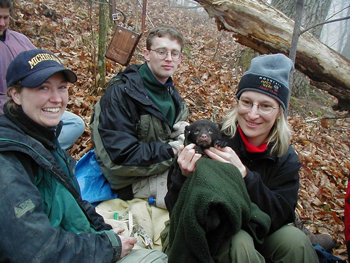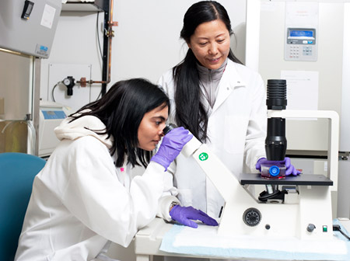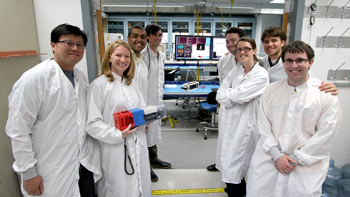Adults can sabotage a student’s path in science or math
Some adults may unknowingly pass along negative attitudes about science and math

Anyone can have a career in a STEM field. But not all kids get that message.
Hongqi Zhang/istockphoto
Anyone can be a scientist — if they are willing to work hard. Sometimes, though, kids don’t get that message.
An adult may tell them outright that science or math is not for them. Often, however, the message will be more subtle. Some teacher, parent or role model may say or do something to make a child think that they aren’t — and cannot be — good at science, technology, engineering or math (STEM).
In the United States and many other countries, society has created some stereotypes — prevailing attitudes — that combat the idea that STEM is for all. For instance, there’s a stereotype in American culture that boys are better at math and girls are better at reading. This isn’t true. Yet students “pick up on these societal stereotypes very early,” says Susan Levine. And scientists are just beginning to understand how that happens.

“It’s very helpful to be STEM educated,” notes Levine, a developmental psychologist at the University of Chicago in Illinois. Being comfortable with math, especially, “is related not just to STEM career paths but longevity, survival, health,” she points out. Science and math also are useful in many everyday tasks, from cooking to taking medicines.
But whether children and teens feel they have a talent for science and math is more complex than just the impressions they might pick up from society, notes Jacquelynne Eccles. She works at the University of California, Irvine. There, she studies why people make the choices they do about jobs and education. People use all types of information to decide how good they are at something, she says. They consider how well they do on tests. They pay attention to how hard they have to work to master certain topics at school. They listen to their parents, teachers and peers. They also look at whether people they want to emulate — role models — are doing science.
Adults can foster STEM anxiety
Parents can unwittingly pass on stereotypes and anxiety. If a mom isn’t good at math, for instance, her daughter may recognize this. And it’s not too big a stretch, Eccles says, for that girl to now assume she won’t be good at math either.
Even helping with homework can backfire. A 2015 study found that when math-anxious parents helped their first- or second-graders with homework, the kids learned less math over the school year. Even worse: These children now tended to stress out more over math themselves. This didn’t happen in kids whose parents who weren’t anxious about math, though.

This might at first seem like it doesn’t make sense, notes Elizabeth Gunderson. She studies developmental psychology at Temple University in Philadelphia, Penn. She also was an author on that 2015 study. Most studies, she observes, suggest that “the more parents help their kids with their homework, the worse kids do.”
In fact, students who receive help with homework don’t get the opportunity “to figure [things] out themselves,” she notes. They come out ahead when they don’t just track down the answers to some questions but instead truly learn something. Finally, parents or other adult helpers who view a subject as hard — and let a child know that — might “infect” a child with stress or concerns about their abilities to succeed in this area.
Math makes even some teachers anxious. And this, too, can affect how students perform.
A 2010 study of grade-school teachers, for instance, found that students tended to perform more poorly on math if their teacher had been a women with math anxiety. The strongest effect was seen in girls. Still, boys are likely being affected negatively as well, Gunderson says.
Attitudes toward failure
How adults speak to children about success and failure also can affect how kids view their abilities and even intelligence. “Praising effort rather than qualities is really important,” Gunderson recommends. Telling a child that they’re smart may seem like it should help to boost their confidence. “But there’s a lot of research showing that this can backfire,” she points out. As soon as someone confronts some type of failure or challenge, she notes, serious doubt can set in. “Then you start to think that you’re not smart enough for this kind of math, or I don’t have enough of this ability — or maybe I never had it all along.”
Instead, she says, praising someone’s effort can reinforce why it’s important to forge ahead when things get tough — to “try, try again.” It also can be useful to note that many famous stars in science and engineering struggled. What made them special was simply to believe in themselves and not give up.

Gunderson advises adults to be mindful of how they talk about success — and about failure. Instead of viewing failure as something that is unacceptable, she says, pitch it as an opportunity for growth and learning. Students often respond positively to messages like “challenges are fun” or “our brain is a muscle.” Indeed, she argues, such messages “can be really powerful.”
Scientists, too, can play a role here, says Levine. They can help develop scripts that direct parents or teachers about how to speak encouragingly to kids about STEM.
Getting on the path to a profession in a STEM field often requires taking specific courses in high school. That’s one reason that students who haven’t decided they want to be a scientist by seventh grade can have an uphill climb succeeding in STEM, says Eccles. “And that’s unique to science.” No other career path is as limited by what you take in high school, she argues.
But the problem may actually begin earlier than that. Kids in elementary and middle school often don’t see the broad vista of jobs that might be open to them, she says.
Girls, for instance, may see plenty of female doctors. But they may never meet an engineer, let alone one who is a woman. And they may not realize that engineering or other areas of science can be great ways to help people, which is something that girls often prize in a career. Boys, on the other hand, may lack male role models for female-dominated professions that may suit them.
“We need to make sure that young people see that [jobs in STEM] provide the opportunities to do the kinds of things they want to do with their lives,” she says.
Helping kids and teens see all the possibilities that exist for them in STEM fields isn’t about just increasing the number of women engineers or minorities in science, Eccles notes. It’s about helping young people make the wisest decision about themselves and their future — whether it’s in STEM or not.







